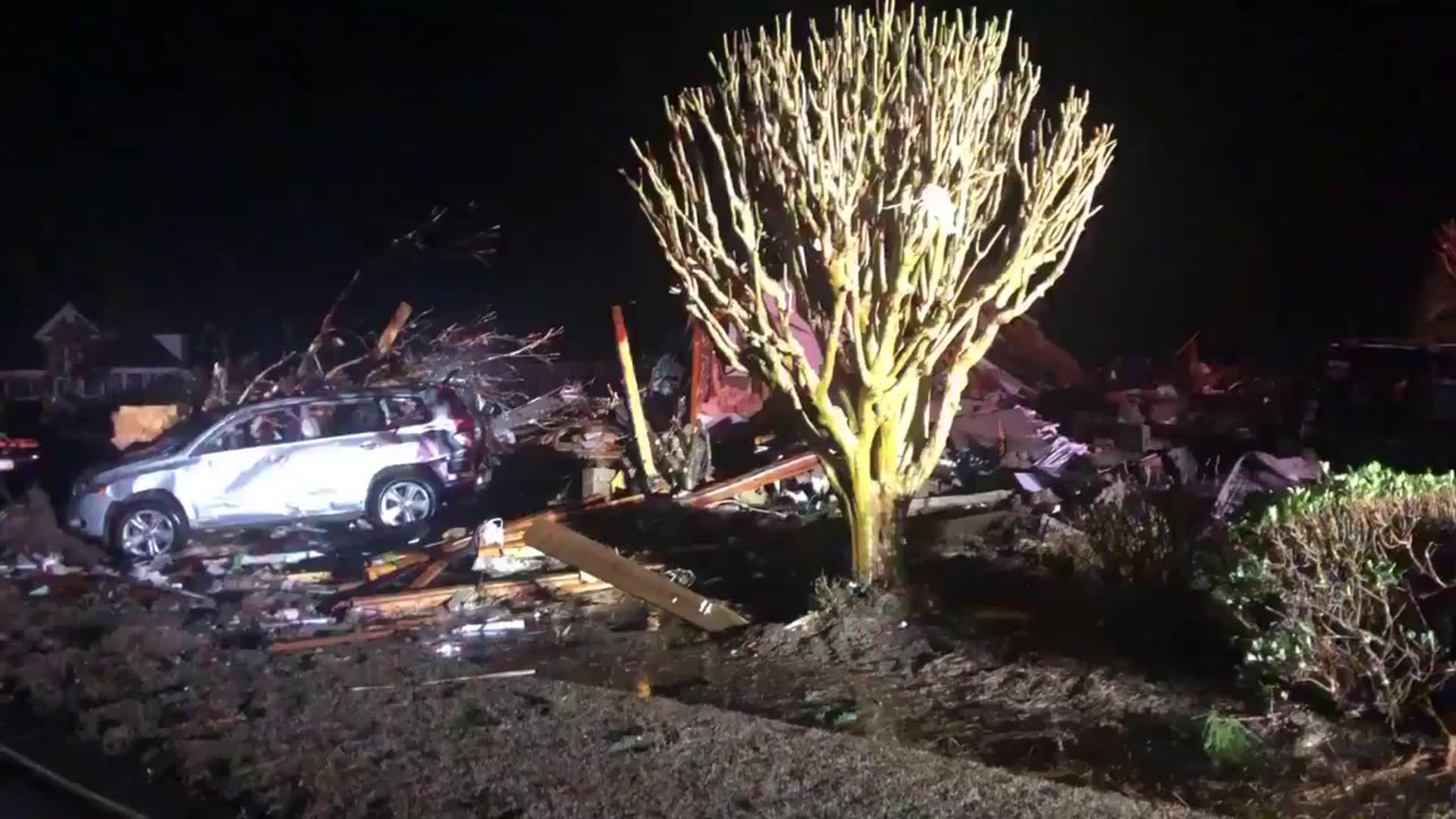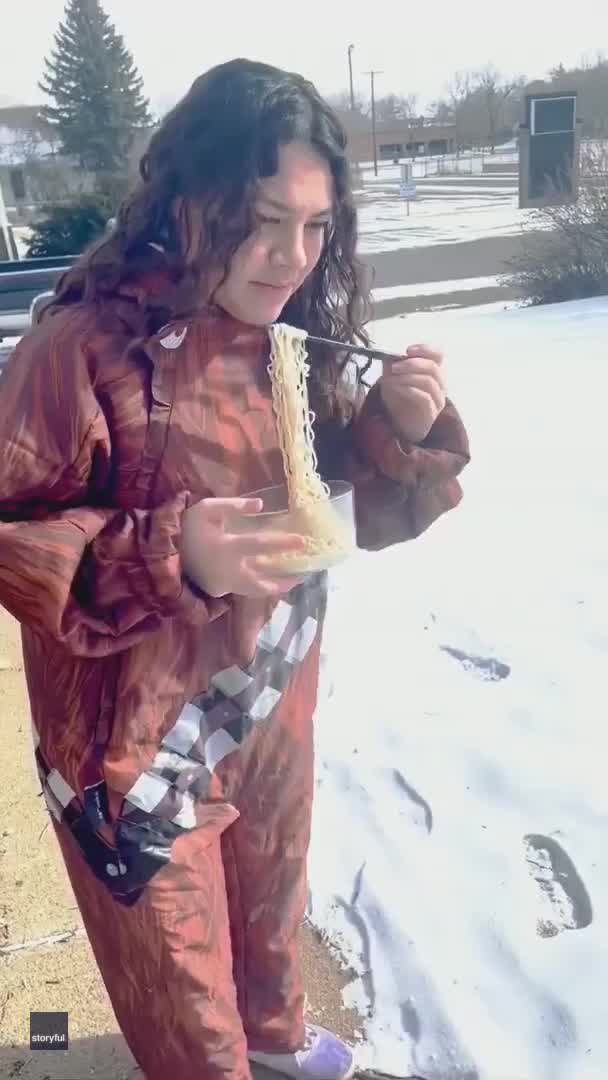Record-setting winter storm charges across the US, with 2nd storm on the way
Major winter weather hammered much of the United States this week, with many areas seeing rare snow and unusually low temps.
The storm system that charged across the U.S. left record-setting low temperatures with wind-chill warnings that extended from Canada into Mexico. The Pacific Northwest saw rare snow, a major blackout is ongoing in Texas and at the rough edge of the arctic blast, a tornado tore through a seaside town in North Carolina — leaving at least three people dead.
The inclement weather also impacted the country’s vaccination efforts. The power outages in Texas forced one county to scramble to get more than 8,000 doses of Moderna’s coronavirus vaccine into arms, while the supermarket chain Publix canceled COVID-19 vaccine appointments in Florida on Wednesday, citing shipment delays.
Millions of Americans on Tuesday remained without power and under winter storm warnings, watches or advisories, according to the National Weather Service.
Now, the winter storm is making a beeline for eastern Canada, but is expected to bring heavy snow and freezing rain in parts of the eastern Great Lakes and New England, the NWS said. Ice totals up to a quarter-inch are possible in central New England.
The East Coast could face record cold temperatures Tuesday evening into Wednesday.
"Temperatures will dip to below normal levels on Wednesday but not to the bitterly cold levels that transpired across the Plains and Mississippi Valley in recent days," the NWS said of the East Coast.
In Omaha, Nebraska the temperature bottomed out at 23 degrees below zero overnight, the coldest in 25 years. The state is also seeing major power outages.
In the South, the storm’s trailing cold front could trigger showers and thunderstorms over South Florida. Millions of Texans without power amid subfreezing temperatures also braced for another round of winter weather that could bring more snow and ice.
Here’s a look at how this massive winter storm has impacted regions across the U.S.
Texas
Millions in Texas are without power after a massive winter storm overwhelmed a power grid.
Some lost power due to the weather conditions, while others are under a rotating outage initiated by the Electric Reliability Council of Texas, which manages the flow of electric power to more than 26 million customers.
A blackout this size, estimated to be affecting more than 4 million homes and businesses, is typically only seen in the state during the sweltering, triple-digit summer days. The power loss isn’t expected to be resolved anytime soon either, as another winter storm was expected to hit the state Tuesday evening.
RELATED: Another winter storm to impact southeast Texas: What you need to know
Meanwhile, several people have died as a result of the weather in the state. Police said a woman and a girl died from suspected carbon monoxide poisoning in Houston at a home without electricity from a car running in an attached garage. Police also said subfreezing temperatures were likely to blame for the deaths of two men found along Houston-area roadways.
The Houston area saw temps in the teens Monday, which broke a record for low temperatures previously set in the early 1900s.
North Texas, near the Dallas region, got several inches of snow Monday and woke up to temperatures in the single-digits. Central Texas also saw a rare snow storm.
The Midwest
A fresh round of snow landed in the Midwest region Monday evening into Tuesday.
Chicagoans can usually shoulder a tough winter, but a foot and a half of new snow Tuesday morning forced Chicago Public Schools to close in-person classes. Hundreds of flights out of O’Hare were canceled, and city-operated testing sites for COVID-19 were also closed Tuesday.
Higher up the lake’s coast, parts of Wisconsin were also under winter weather advisories and winter storm warnings for much of Tuesday.
On the other side of the lake, the Detroit region was also blanketed with new snow Tuesday morning, seeing about 7 or 8 inches total. The area also got snow earlier in the week, meaning the snowstorm dumped the most snow in a single storm for the first time in three years.
Meanwhile, the bitter cold lingered in Minnesota, where the Twin Cities saw over 225 hours with temperatures at or below zero so far in February — ranking it fourth all-time for subzero hours, dating back to 1872.
East Coast
Temperatures in Washington, D.C. remained about 5 degrees too warm for anything other than rain, according to FOX 5 DC Meteorologist Mike Thomas. Many areas saw more than a half inch of rain on Monday night — setting a daily record at Dulles International Airport. Freezing rain and ice was mostly confined to the mountain regions.
The cold was expected to return overnight Tuesday and into Wednesday in the nation’s capital, with temperatures Wednesday morning likely starting off in the 30s. A snowy mix was possible for the area on Thursday.
A couple of hours northeast in Philadelphia, Tuesday began with freezing rain with highs reaching 50 degrees. Colder air was expected to move back in on Wednesday — leading to the potential for accumulating snow on Thursday.
Snowfall could be heavy at times Thursday in Philadelphia with some areas seeing 3 to 6 inches, or even up to 7 inches in isolated spots, according to FOX 29 Meteorologist Sue Serio.
In New York City, the winter storm brought freezing rain Tuesday and an icy mix of precipitation outside the area. Parts of northern New Jersey and Orange County in New York were under an ice storm warning Tuesday morning. Forecasters said ice and snow brought on by the storm, in tandem with some locally dense fog could make travel conditions difficult and possibly hazardous.
More snow, sleet, freezing rain and rain were possible on Thursday and Friday in the Big Apple and in surrounding areas.
This story was reported from Cincinnati and Detroit. The Associated Press contributed



